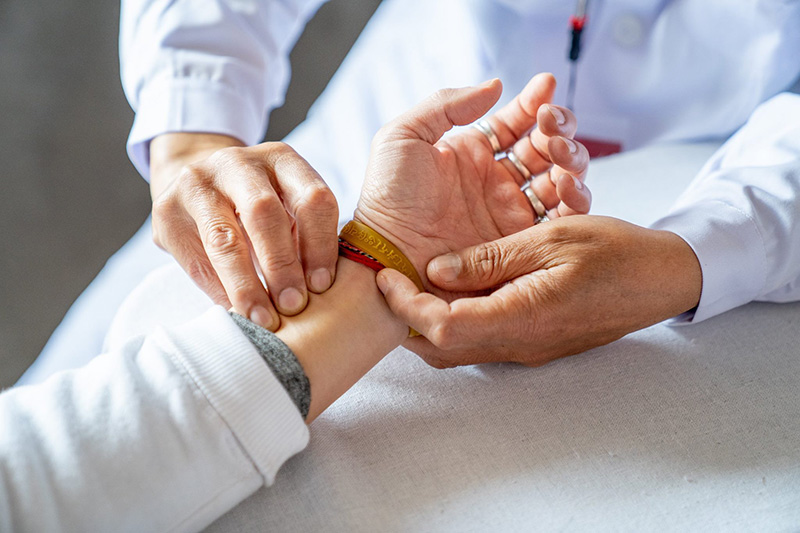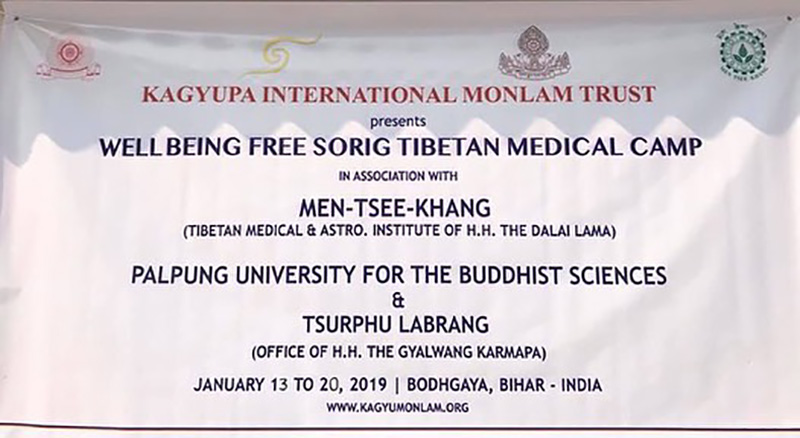A second medical camp, housed in tents behind the Monlam Pavillion, offers traditional Tibetan medicine free of charge for a range of conditions.

1.The camp is being organised by the Kagyupa International Monlam Trust in association with the Tibetan MenTse Khang, Palpung University for the Buddhist Sciences and Tsurphu Labrang.

2. It’s very popular with both Himalayan and Indian people and a long queue forms early.

3. In Tibetan medicine the doctor looks at the patient’s tongue, examines a urine sample, and takes their pulse in order to diagnose what’s wrong.

4. Pulse taking is very precise: the doctor places the index, middle and third fingers on the radial arteries and examines the pulse on both left and right wrists: the left wrist is first if the patient is a man, and the right is first for a woman.

5. There are six distinct pulses on each side each of which relate to the functioning of different body parts, such as heart, lungs, intestines, stomach and so on.

6. Various treatments are available-

7. such as herbal ointments for sores and wounds

8. manipulation

9. and round pills of Tibetan medicine

10. In the dispensary, the Tibetan pharmacist sorts out prescriptions

11. Patients collect their free medicine from the dispensary.


































